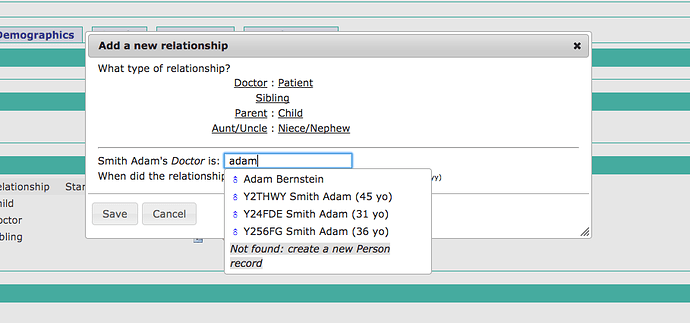Hi Everyone,
I’m excited about the new feature to collect relationships during the registration process. I’ve been brainstorming how to operationalize this in iSantéPlus.
Person Relationship Requirements: We currently have a few types of person relationships that we track:
- Parent/Child relationships allow us to track guardians and people responsible for children
- Emergency Contact relationships allow us to identify people to contact in the event of a medical emergency
- Medical Disclosure relationships allow us to identify people who can review a patient’s medical record
The person relationships feature in RefApp 2.6 allows us to connect a person to another person that’s already registered in OpenMRS. There are times when a person isn’t already in OpenMRS and shouldn’t necessarily be registered in the system.
Brainstorming solutions to this, it seems as though we would want the option to check if the person of a particular relationship type is in the system, then collect their information if they aren’t registered.
Field 1 RelationshipType: This would be a hardcoded relationshipType like “Emergency Contact” Field 2 patientSearch: Search for that patient (return UUID of patient) Field 3 notFound Boolean: If the patient isn’t found in the system, check a box to collect the relationship information in the registration app. If this box is checked, display the following fields:
- Name
- Address (based on address hierarchy)
- Phone number
Questions:
- Do others have a similar use case?
- Does this sound like an appropriate solution?
- If a person isn’t in the system, would it be appropriate to collect a minimum amount of information and register them in the system as a person?
- Could this be done in a generic way in the registration app?
Thanks, Craig


